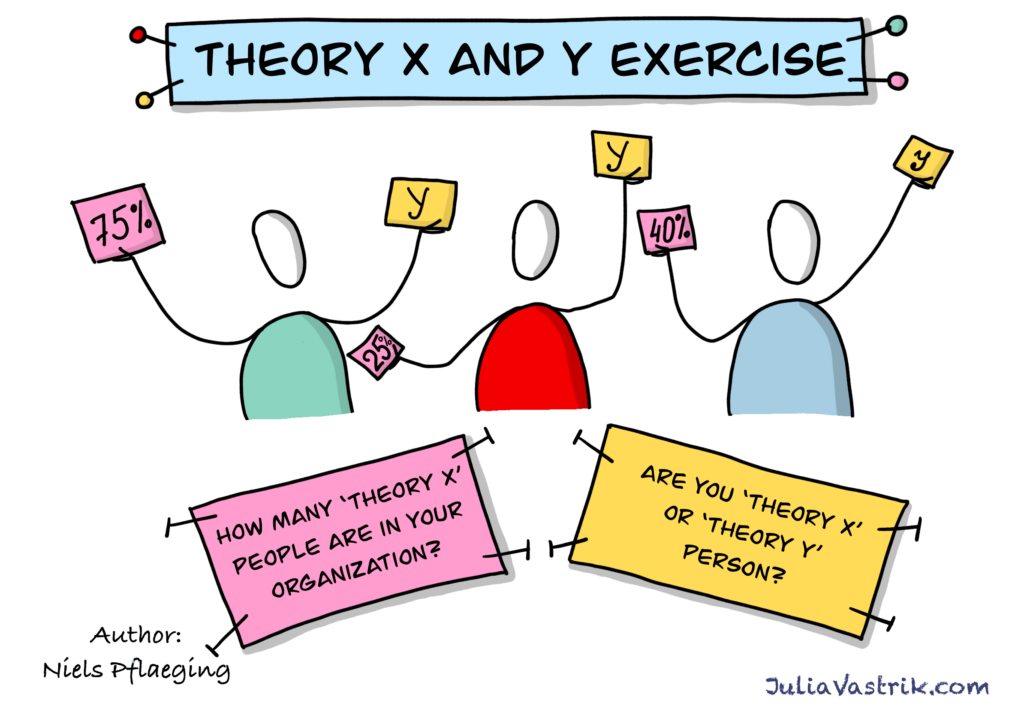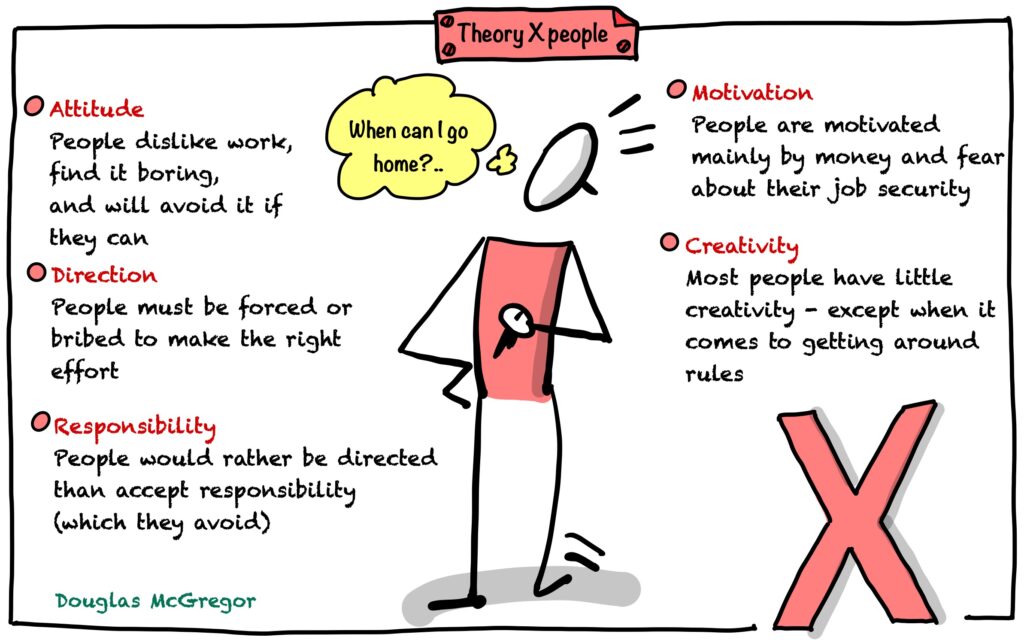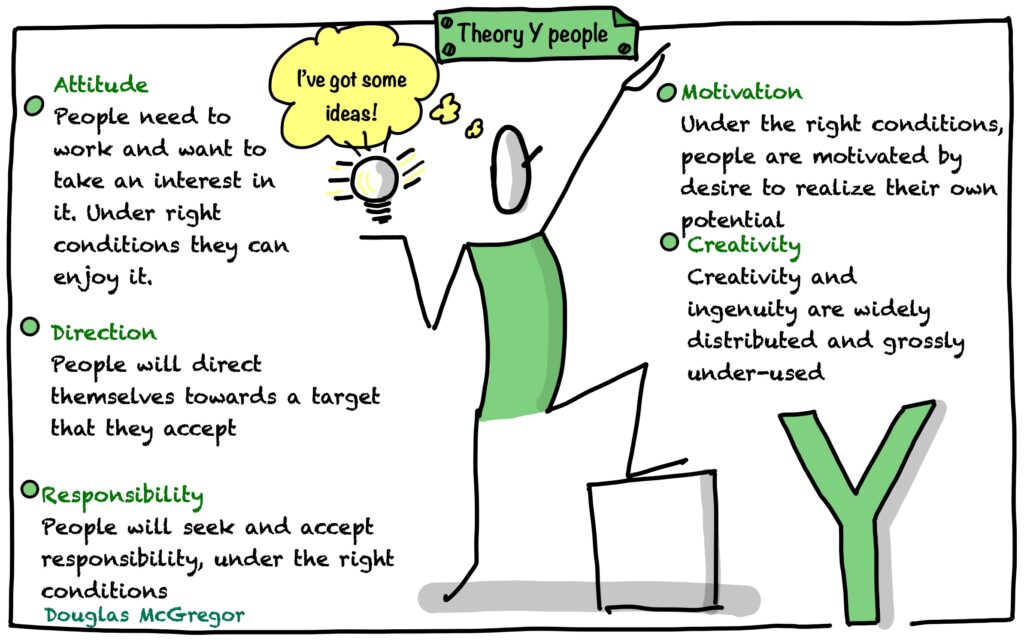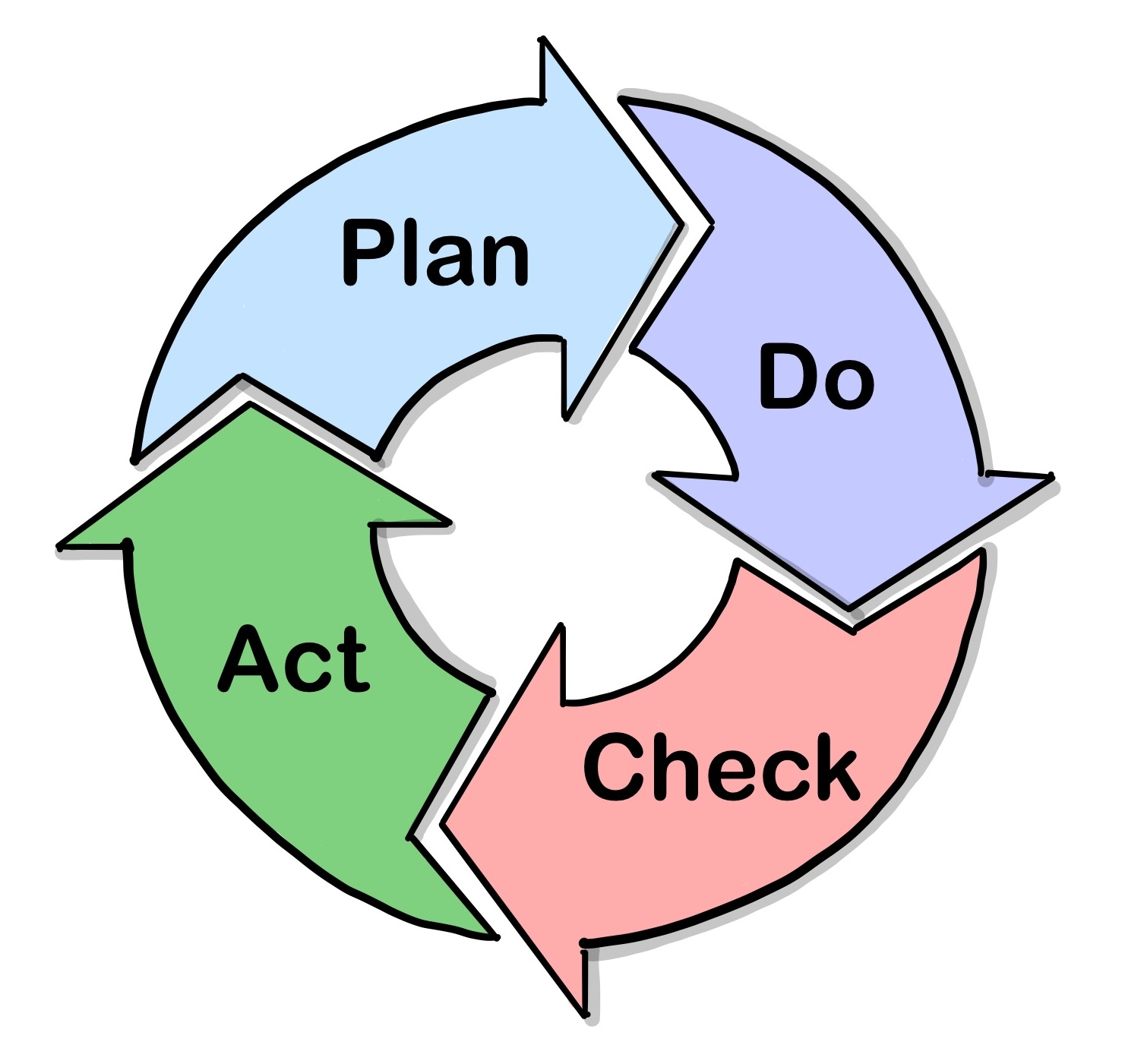I learned this great exercise from Niels Pflaeging and usually run it in leadership-level training, and it always has a great effect. I also use materials from Niel’s excellent book “Organize for complexity“.

Are you a Theory X or Theory Y person?
Douglas McGregor introduced Theory X and Theory Y people notion in his book “The Human Side of the Enterprise” (1960).
Are you usually trying to avoid work and responsibility, need a lot of external motivation in the form of money and fear, and use your creativity only when you need to get around rules? (‘Theory X’).

Or are you rather motivated, creative, and self-directing, and you mostly enjoy working and accepting responsibility? (‘Theory Y’).

And what about others around you?
“Theory X and Y” exercise is a good fit for:
– Leadership training
– Scrum Mastery/Agile Coaching training
– Advanced level team training
Duration: ~15-30 minutes. The exercise itself takes no more than 5 minutes, while most of the time goes into explaining what the “Theories X and Y” are and debriefing afterward, which is the most interesting and valuable part.
Facilitation
- Introduce characteristics of Theory X and Theory Y people
- Ask participants to write down individually on 2 different sticky notes, let’s say pink and yellow ones:
- First, on the pink one, the percentage of people in their organization or department who they think are ‘Theory X’ people.
- Then, on the yellow sticky note piece of paper their own letter – ‘X’ or ‘Y’ – which of the theories better describes them.
- Then people exchange both their sticky notes with their neighbor and I ask:
1. Raise your hand if the pink sticky note has a percentage of 0% ! (Never happened!)
2. Now raise your hand if you have a letter X! (Almost never too!)
Debrief
And here is a contradiction—we believe that we are clearly ‘Theory Y’ people, while there are many (or at least some) ‘Theory X’ people around us.
Ask the participants why they think it happens.
We often identify ourselves with Theory Y:
– I want to achieve great things!
– I am responsible.
– I am creative.
But what about others? Clearly, there are many Theory X people around us. We see them everywhere—in our organizations and beyond.
But here’s a caveat: according to McGregor, Theory X people don’t actually exist. It’s just our assumption. While we have direct access to our own thoughts and feelings, we don’t have the same access to other people’s minds. We judge others by their behavior only. And behavior is shaped largely by the environment—much more than we often realize.
In 1936 Kurt Lewin, German-American psychologist, came up with the behaviour equation “B = f(P, E)”.
It states that an individual’s behavior (B) is a function (f) of the person (P), including their history, personality and motivation, and their environment (E), which includes both their physical and social surroundings.

In extreme conditions, our behavior can be influenced as much as 90% by external factors. Typically, it’s around 60%. That’s still a lot. So, while we judge people, we might be better off paying closer attention to the environment that shaped such behavior in the first place.
We usually underestimate, and very much, how heavily behavior is influenced by the environment. We tend to think that our or other people’s behavior mostly depends on personality, ignoring behavior-shaping context and conditions.
And this matters.
How Niels Pflaeging put it:
It matters because assumptions we have about other people shape our behaviour, and the way we tend to design and run our organizations. If you believe in the existence of Theory X humans, then command-and-control systems design will follow.
“Organize for Complexity”
Our assumptions about human nature lead to very different management styles. They create very different environments. And they result in very different behaviors.
Toxic environments create ‘Theory X’- type behaviors. If we want to have ‘Theory Y’ people around us, we need to change our environment. We should not try to change people or replace them with “better” ones—as these new people will start behaving the same way “bad” very soon—or just leave.
Manage the environment, not the people.



